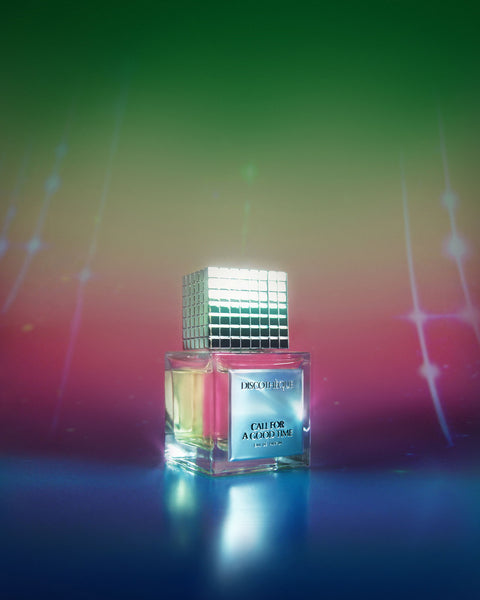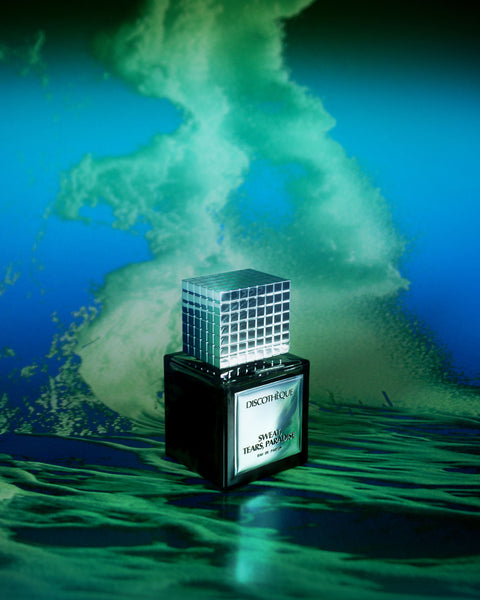Listen to Discothèque: Perfume

All Night Until First Light
1989, IBIZA
ONE EUPHORIC MOMENT, A BLAZING STREAK OF GRAPEFRUIT PINK, A BRAZEN SAFFRON SKY, SUN-DRENCHED CHEEKS, A SALTY BREEZE, AN ELECTRIC AURORA BOREALIS, A DREAM YOU WON’T REMEMBER, AN ETERNAL SUNRISE IN IBIZA, THE BLISS OF AMNESIA.

Call for a Good Time
2000, TOKYO
Flying sparks of bright white stars, amber lasers, a glitter-eyed crush, violet orbs, plumes of jasmine, pink blush, the twirling petals of ylang-ylang, yuzu cake on the dance floor, all the shining colours spinning from a gigantic mirror ball in the sky.

Heathens, Cowboys and the Santa Ana Winds
1986, LA
Palm trees, a wild sweet breeze, fortunes told, green tea leaves, naked hips, Freudian slips, loose lips, sandalwood embers in warm amber sunsets, a city of angels with no angels, a haven for heathens, cowboys and nymphos.

Baise Moi on the Dancefloor
1979, PARIS
Silky waters, crystal goblets and champagne bottles, iris sprigs, wild vines of jasmine, intertwined limbs and steamy handprints, a timeless ruse, a poet and a muse, an ocean of violets in bloom, “love is a reciprocal torture,” breathed through a cloud of powder.

Sweat, Tears, Paradise
1995, MYKONOS
A rave on the beach, zephyrs of an untamed sea, cerulean waters, mysterious beasts, flaming absinthe, onyx rock cliffs, shots of lightning in a stark black sky, salted air and ocean mist, the rhythm of waves crashing to the downbeat, an otherworldly place.

Lola at Coat Check
1992, NEW YORK
Velvet ropes, spirals of sandalwood smoke, love letters and curses, white chocolates in pockets, a moment of softness, razor-edged nails, tiered chandeliers, a glimpse of the moon high in the sky, a whisper on lips that turns into a 4am surprise.

Dark Imagination
2003, MARRAKESH
A seduction like quicksand, a desert filled with roses, a blooming kaleidoscope, air thick with heat, one pulsing beat, soft leather and sweat, sweet patchouli haze, skin like fire, a taste of black plum, a labyrinth of mind games, maybe love, maybe madness.
